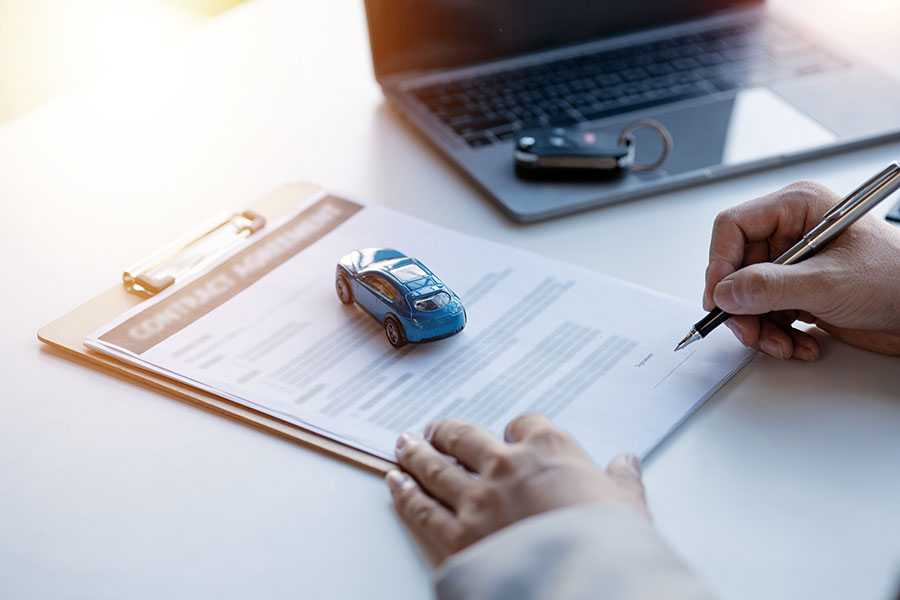5 Essential Steps for Car Selling Paperwork

Understanding the intricacies of paperwork when selling a car can make the difference between a smooth transaction and a bureaucratic nightmare. Navigating through the legal and administrative requirements is crucial to ensure both you and the buyer are protected. Let's delve into the five essential steps for managing car selling paperwork efficiently.
1. Collect Necessary Documents

Before embarking on the car selling process, gather all pertinent documents:
- Vehicle Title: This is your proof of ownership. It must be signed over to the buyer.
- Bill of Sale: Details the sale, including price, terms, and signatures of both parties.
- Maintenance Records: To provide transparency and build trust with the buyer.
- Odometer Reading: A legal requirement in many states to show the true mileage of the vehicle.
- Release of Liability: To protect you from future liabilities related to the car post-sale.
- Vehicle History Report: Optional but can increase buyer confidence by showing the car’s history.
📝 Note: Be thorough in checking that each document is up-to-date and reflects the current state of the vehicle.
2. Verify the Vehicle Title

Your vehicle title should be:
- Clean from any liens.
- Endorsed by both the buyer and you.
- Free from any errors or alterations which might void the transfer.
In certain states, you might need to:
- Obtain a duplicate title if it’s lost.
- Pay any outstanding fees or liens on the title before proceeding.
3. Fill Out the Bill of Sale

The Bill of Sale is a critical document in any car sale, here’s what to include:
- Name and addresses of both parties.
- Vehicle identification number (VIN).
- Make, model, year, and color of the car.
- Purchase price, agreed upon by both seller and buyer.
- Odometer reading at the time of sale.
- Date of sale and any additional terms or warranties offered.
💡 Note: Keeping a copy of the Bill of Sale is advisable for your records, ensuring you have proof of the transaction.
4. Transfer Ownership and Registration

Transferring ownership legally requires:
- Notifying your state’s DMV of the sale, which might include filing a Notice of Sale.
- Filling out the transfer section on the back of the title, including your signature and that of the buyer.
- Updating the registration to the buyer’s name, which might involve the buyer paying taxes and registration fees.
5. Handle Additional Paperwork

Additional steps might include:
- License Plates: Depending on the state, you might need to remove or surrender the plates.
- Emissions Test: If your area requires an emissions test, ensure one has been performed recently.
- Insurance: Cancel your insurance coverage once the sale is complete to avoid further costs.
Furthermore:
- Provide the buyer with warranty documents if applicable.
- Check for any state-specific requirements or forms.
🔔 Note: Keep track of deadlines for notifying authorities of the sale to avoid potential fines or complications.
In summary, selling a car involves a series of critical steps that require careful attention to paperwork. Collecting and verifying documents, filling out the bill of sale, transferring ownership, and handling additional paperwork all play a role in ensuring a legitimate and binding transaction. By following these five essential steps, you'll be well-prepared for the complexities of selling your car, ensuring a hassle-free process for both you and the buyer.
Do I need a Vehicle History Report to sell my car?

+
While not legally required, providing a Vehicle History Report can instill confidence in the buyer by detailing the car’s past.
What happens if there is a lien on the title?

+
You’ll need to either pay off the lien or work with the lender to facilitate the title transfer, often requiring a letter of lien satisfaction.
Can I keep the license plates?

+
It depends on your state’s laws. Some states allow you to retain your plates for transfer to another vehicle, while others require surrender.
How can I ensure the transfer of ownership is smooth?

+
By submitting a Notice of Sale or a Release of Liability form to your state’s DMV, which informs them of the change in ownership, reducing your liability.
What if I lose the vehicle title?

+
You’ll need to request a duplicate title from your state’s DMV, which might involve filling out forms and possibly paying a fee.